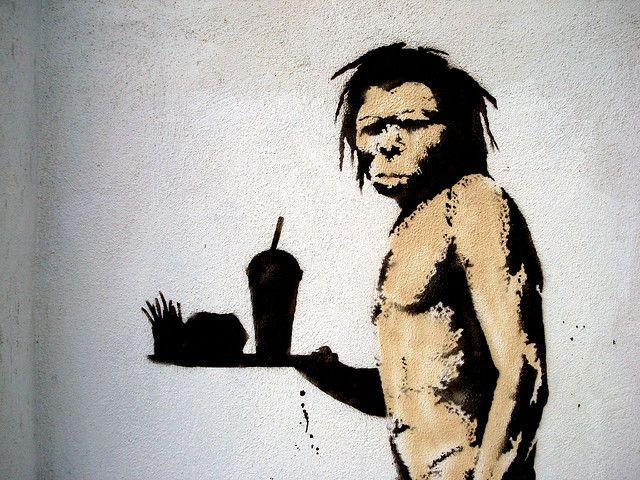The Paleo Diet And Cavemen: There May Not Be A Connection After All

The Paleo (short for Paleolithic) Diet has grown in popularity over the past few years — the idea being people eat the same foods the cavemen did, which is a lot of meat, fish, and plants. But a new study published in The Quarterly Review of Biology found this diet might have less to do with cavemen than it does a person’s desire to cut out processed foods.
"Based on evidence that's been gathered over many decades, there's very little evidence that any early hominids had very specialized diets or there were specific food categories that seemed particularly important, with only a few possible exceptions," said Dr. Ken Sayers, a post-doctoral researcher at the Language Research Center of Georgia State, in a press release. “Some earlier workers had suggested that the diets of bears and pigs, which have an omnivorous, eclectic feeding strategy that varies greatly based on local conditions, share much in common with those of our early ancestors. The data tend to support this view.” Sayers and his fellow researchers arrived at this conclusion after examining prior paleoenvironmental, chemical, and anatomical evidence from the period.
This evidence indicated cavemen weren’t very good hunters. They also had flat teeth, which would have made it difficult for them to chew plants. In fact, it’s difficult to characterize the Paleo Diet at all. The modern recommendations to source a certain amount of protein, fats, and carbohydrates are based largely on estimations from a limited number of modern human hunter-gatherers; the diet of our early ancestors was most likely much broader than we've come to think.
Since cavemen didn’t live in any one particular region, they would have eaten whatever was available. Researchers explained cavemen living in a northern climate would have maintained an animal-based diet, while cavemen living near the equator would have maintained a plant-based diet. The truth is, cavemen were more concerned with survival than they were with a specialized or optimal diet.
“I think that you would certainly have lots of variation way beyond what [today’s] recommendations are,” Sayers said. “When you’re trying to reconstruct the diet of human ancestors, you want to look at a number of things, including the habitats they lived in, the potential foods that were available, how valuable those various food items would have been in relation to their energy content, and how long it takes to handle a food item.”
Researchers suspect eating paleo is so popular because it’s rooted in raw food, or eating food in its original form. This is a healthier way of eating since processed foods tend to be loaded with unhealthy fats, sugar, and sodium. It just may not be realistic to say it's a replica of a caveman's menu.
Source: Sayers K, Lovejoy C.O. Blood, Bulbs, and Bunodonts: On Evolutionary Ecology and the Diets of Ardipithecus, Australopithecus, and Early Homo. The Quarterly Review of Biology. 2014.
Published by Medicaldaily.com



























